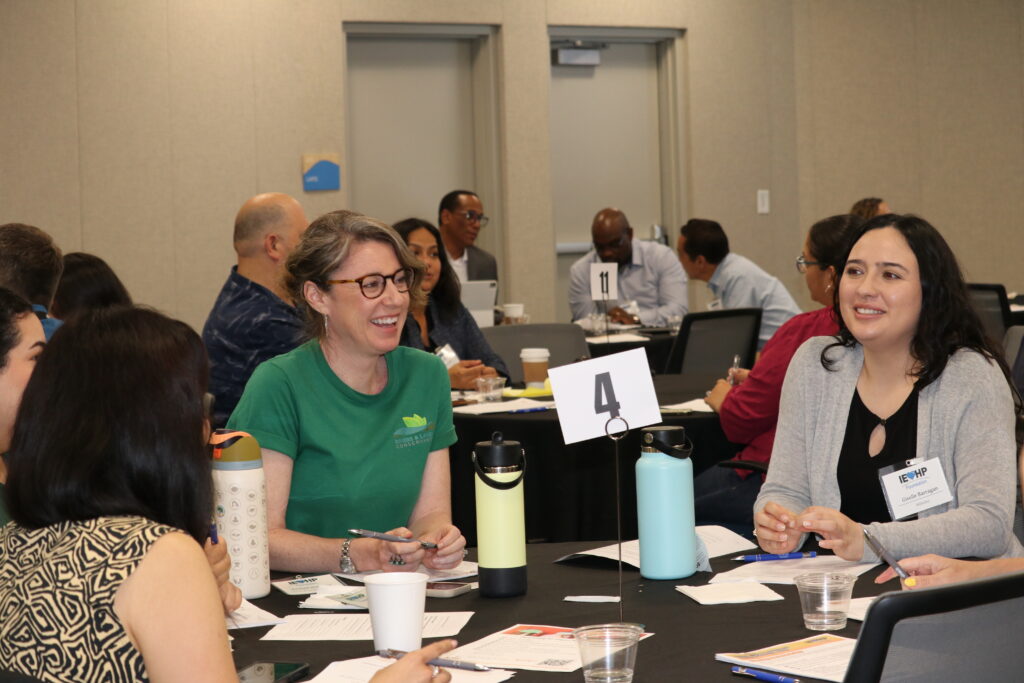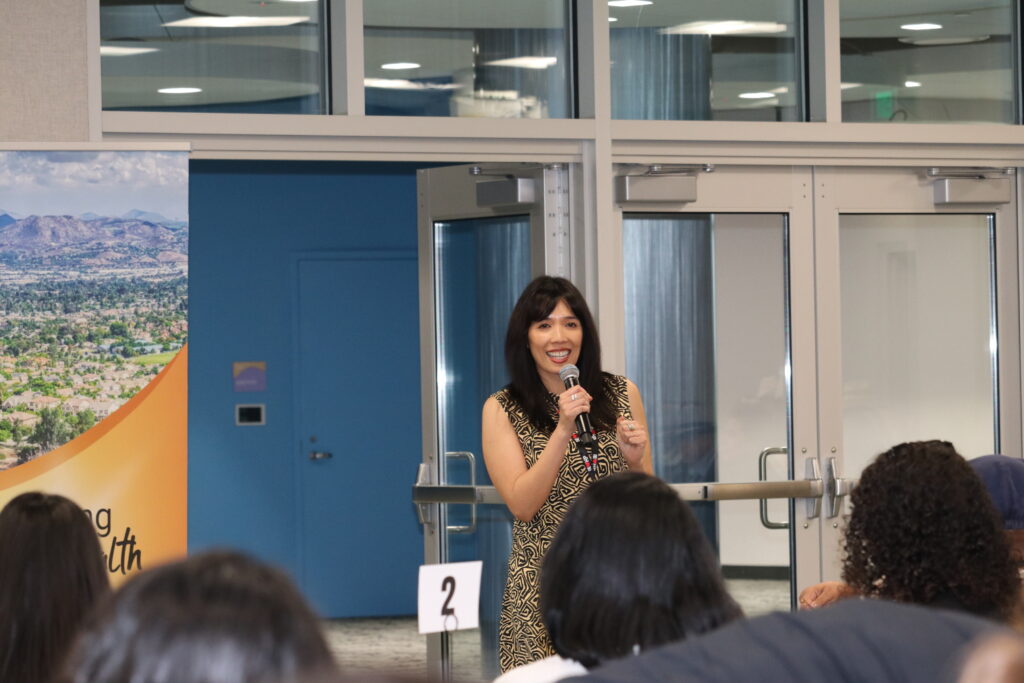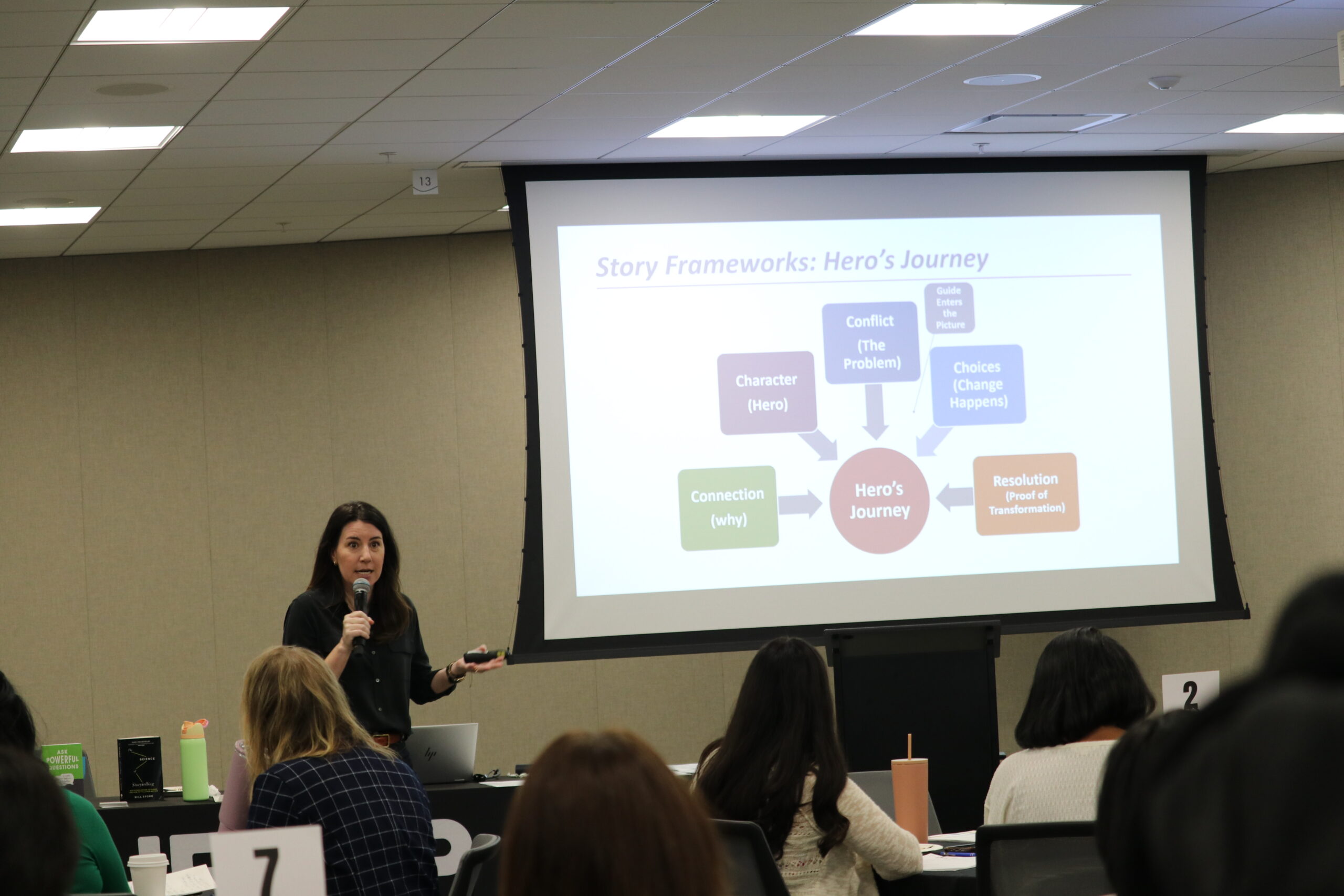In the realm of nonprofit communications, we often excel at detailing our actions and the impact we create. Yet, one crucial element frequently overlooked is the “why” behind our efforts. Understanding and articulating this motivation is essential for deeper connections with our audiences.
This sentiment echoed at the IE Vibrant Health Forum, themed “Storytelling for Impact: Tools to Inspire and Influence Change,” held on Thursday, May 23, where over 100 nonprofit leaders gathered from across the Inland Empire. The forum aimed to equip participants with the skills to identify, amplify and harness the transformative power of storytelling to foster change and inspire action.
Kristen Caloca, a recognized expert in nonprofit strategic communications and the founder and CEO of KMC Social Impact Strategies, led the session. She provided practical tools and strategies to help nonprofits shape and share compelling narratives that resonate with funders, legislators, and wider communities.

A standout concept presented by Caloca was the nonprofit’s role in storytelling. It became clear that not every story shared by an organization belongs solely to them. Instead, nonprofits serve as “story partners,” working alongside their clients and communities to amplify their narratives.
Caloca introduced attendees to the Hero’s Journey Framework, emphasizing the importance of placing the protagonist—often the individual or community being served—at the forefront of the story.
“We start with the ‘why’ and the shared values,” she explained. “Only then do we meet the main character of our journey.”
As the narrative unfolds, the protagonist faces challenges that create conflict, requiring them to make difficult choices. This is where the guide—symbolizing the nonprofit—enters the scene, providing the support necessary for transformation.
“Partnership is key,” Caloca emphasized. “Once a guide appears, change begins, and transformation follows.”
In this framework, nonprofits are not the heroes; their clients are. Nonprofits act as guides on their clients’ journeys, facilitating growth, change and empowerment.
In addition to storytelling strategies, the event highlighted several key takeaways:
- Show, don’t tell
- Jargon = confusion
- Storytelling is a leadership practice for everyone
- Define individuals by their strengths and aspirations
- Consent is not ongoing
- Work smarter, not harder – repurpose content
- If you haven’t measured it, you can’t improve it
- As an organization, you are a story partner, not a story holder
- K.N.O.W. your audience – Keep track of them, note shared values & needs, observe traits & behaviors and understand where & how do they engage.

Additionally, the audience heard fellow nonprofit communicators on how stories are identified and developed within local organizations, including at IEHP and A Greater Hope. IEHP Communications Director Enid Portuguez shared how the health plan identifies stories from their members and shares across various channels, including social media, publications and video. Amanda Bell from A Greater Hope supported the idea of trauma-informed storytelling and shared how storytelling can advance and deepen an individual’s healing journey.
Post-event surveys indicated that the insights and tools resonated deeply with attendees from various sectors. Many expressed eagerness to implement these newfound skills in their organizations.
One participant remarked, “We will have a thoughtful discussion and training for our entire staff focused on the course’s content and our ‘why.’”
Another noted, “Even though we don’t provide direct services, there is still significant value in telling an important story.”
For those who couldn’t attend in person, we invite you to explore the resources shared during the forum and watch the recorded presentation to further enhance your storytelling capabilities.
